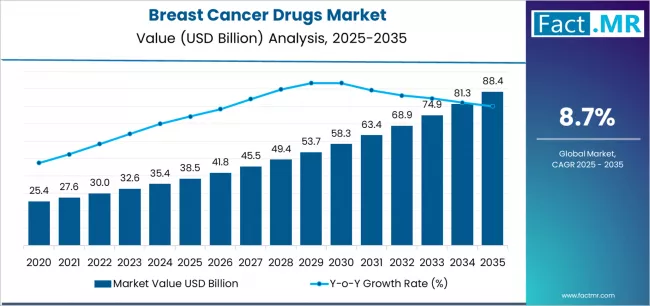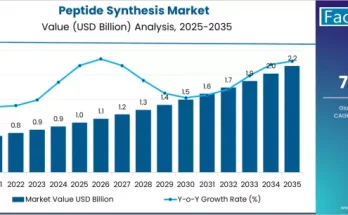Breast cancer remains one of the most prevalent cancers globally, driving demand for innovative therapies that improve patient outcomes. The breast cancer drugs market has evolved significantly with the rise of precision oncology, offering therapies that target specific molecular drivers of the disease. These treatments include targeted therapy, hormonal therapy, chemotherapy, and emerging immunotherapy approaches, all aimed at enhancing survival rates, reducing disease progression, and minimizing side effects. With growing awareness of breast cancer, advancements in diagnostics, and an emphasis on personalized medicine, this market continues to expand across both developed and emerging regions.
Market Overview:
The breast cancer drugs market comprises diverse therapeutic options designed to address different molecular and clinical subtypes. Targeted therapies dominate the market due to their precision in acting on specific oncogenic pathways, improving clinical response rates and safety profiles. Hormonal therapies remain crucial for hormone receptor-positive cancers, providing effective options for long-term disease management. Chemotherapy and immunotherapy complement these approaches, offering treatment for aggressive subtypes such as HER2-positive or triple-negative breast cancers. The integration of companion diagnostics and biomarker testing further enhances the efficacy of these drugs by guiding therapy selection and monitoring response.
Therapeutic Insights:
Targeted therapy has emerged as the leading segment, providing drugs that directly interfere with cancer-specific pathways. This includes monoclonal antibodies, small-molecule inhibitors, and antibody-drug conjugates that offer high receptor specificity. Hormonal therapy continues to be essential for estrogen or progesterone receptor-positive breast cancers, enabling long-term disease control. Immunotherapy, including checkpoint inhibitors and combination regimens, is gaining prominence in aggressive and treatment-resistant subtypes. Together, these therapies form a multi-modal approach that supports individualized patient care and improved clinical outcomes.
Applications and End-Use:
The primary end-users for breast cancer drugs are hospitals, oncology clinics, and specialized cancer treatment centers. Increasing adoption of targeted therapies and immunotherapies is enhancing treatment precision, particularly in first-line and second-line care settings. Pharmaceutical companies and healthcare providers are increasingly focusing on companion diagnostics and genomic profiling to guide therapeutic decisions, enabling earlier intervention and optimized treatment sequences. Population-based screening programs in emerging regions are further driving adoption by identifying patients eligible for advanced therapies.
Regional Insights:
North America leads the market, supported by advanced oncology infrastructure, robust clinical research, and widespread adoption of targeted therapies. Europe follows closely with strong emphasis on precision medicine, biomarker-driven protocols, and well-established healthcare networks. Asia Pacific is emerging as a high-growth region, driven by increasing breast cancer incidence, improved screening, and expanding access to modern oncology drugs. Latin America and the Middle East & Africa are witnessing gradual adoption, with growing awareness, healthcare modernization, and increased treatment availability contributing to market growth.
Market Drivers:
Key factors fueling growth include:
- Rising Demand for Precision Oncology:Personalized therapies tailored to tumor biology are improving survival outcomes.
- Technological Advancements:Companion diagnostics, genomic profiling, and biomarker identification enhance treatment precision.
- Innovative Drug Development:Antibody-drug conjugates, kinase inhibitors, and immunotherapy platforms address unmet clinical needs.
- Healthcare Modernization:Investment in oncology infrastructure, expanded reimbursement pathways, and improved access to specialized care drive therapy adoption.
- Increasing Awareness:Population screening programs and patient education facilitate earlier diagnosis and treatment uptake.
Challenges and Restraints:
Despite the market’s growth potential, high therapy costs, reimbursement variability, and limited access to advanced diagnostics in low-income regions remain significant barriers. Clinical complexity in treatment sequencing and managing adverse effects from targeted agents or immunotherapies require specialized expertise. Moreover, disparities in healthcare infrastructure and access to trained oncologists may affect equitable adoption of advanced breast cancer drugs globally.
Emerging Trends:
- Integration of Companion Diagnostics:Biomarker testing and genomic profiling guide precise treatment selection.
- Combination Therapies:Pairing targeted drugs with immunotherapy or chemotherapy improves outcomes for aggressive subtypes.
- Advancements in Antibody-Drug Conjugates:Improved delivery systems increase efficacy while minimizing systemic toxicity.
- Expansion of Immunotherapy:Checkpoint inhibitors and combination regimens are gaining adoption for difficult-to-treat cancers.
- Personalized Treatment Pathways:Tailored therapy based on tumor biology and patient-specific factors is shaping clinical practice.
Competitive Landscape:
Major players in the breast cancer drugs market include Pfizer Inc., Novartis AG, Merck KGaA, Janssen Pharmaceuticals, Celgene Corporation, F. Hoffmann-La Roche Ltd., AstraZeneca, AbbVie Inc., and Bristol-Myers Squibb. Companies compete through drug innovation, clinical research, regulatory approvals, and partnerships with healthcare institutions. Investments in biomarker-aligned therapies, precision medicine programs, and combination treatment options are key differentiators for market leaders.
Future Outlook:
The breast cancer drugs market is poised for sustained growth as precision oncology becomes the standard of care. Targeted therapies will continue to dominate, while immunotherapy and antibody-drug conjugates expand clinical applications. Emerging regions, particularly Asia Pacific, are expected to drive significant volume growth with increased healthcare access and awareness. Continuous innovation in companion diagnostics, treatment sequencing, and combination therapies will further improve patient outcomes and support the long-term adoption of advanced breast cancer drugs.
Conclusion:
Breast cancer drugs are central to modern oncology, offering tailored treatment strategies that enhance survival, reduce disease progression, and improve quality of life. The integration of precision medicine, biomarker-driven therapy, and innovative drug formulations is reshaping clinical practice globally. With ongoing investment in research, infrastructure, and patient education, the breast cancer drugs market is well-positioned to meet the evolving demands of healthcare providers and patients worldwide.
Browse Full Report – https://www.factmr.com/report/breast-cancer-drugs-market



